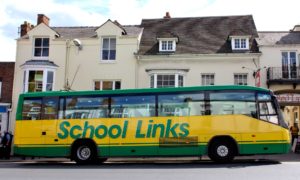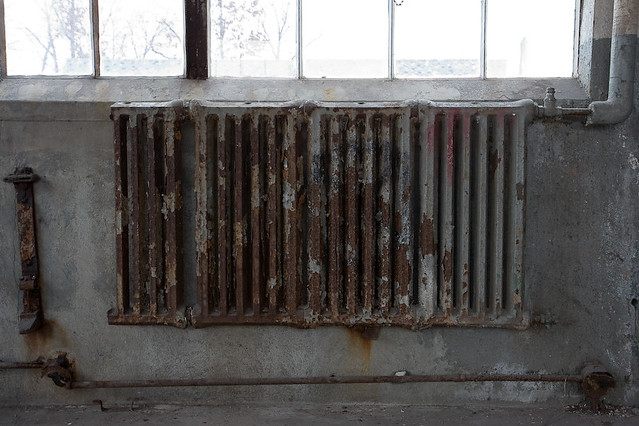I found debate last week so frustrating. It’s clear 1S2C is wildly unpopular with the community & teachers but attempts at finding alternatives on the debating floor didn’t get the investigation they deserve, so the session ended up as a talking shop. Genuine compromise 3-school models do exist, and some configurations that deserve a proper evaluation are being overlooked. One in particular seems to have great potential to work very well, and deserves a closer look.
The proposal would be a hybrid of the De Lisle/Le Pelly amendment with Le Tocq/Brouard amendment for a 3×11-18 school model, but crucially include an element to recover costs by moving the FE institute build to use Les Beaucamps School premises, with suitable alteration, allowing the sale of the valuable SPP school site, e.g. for affordable housing. In contrast the current proposals, which end up with vacant LMDC (playing fields too marshy, low disposal value) and LV (States don’t own playing fields) do not make good use of the available opportunities in the estate and so are not good value for money overall.
I suspect this would be cost-effective and could attract majority (at least lukewarm) support across all stakeholders, and community, and teachers, if properly investigated and if parties were willing to compromise from their “ideal” positions to a position that addresses all the identified issues, at least reasonably well. Saddening to see the States floundering around and missing important elements.
Rebuilding LMDC gives an automatic transition plan, as the remaining three schools (LV, SSHS and LBHS) have spare capacity. So, during the build La Mare students would temporarily move to schools in the existing estate: SSHS can take 720, LBHS 660 and LV 800 + 400 in Sixth Form. For a couple of years only, we’d be running with a 1x 11-18 + 2x 11-16 model. All within design limits of the schools, no Portacabins needed, and no students have their education damaged.
But with a rebuilt LMDC, a project so expensive it begat the two-school model, there’s space for a sixth form. Original plans exist for a secondary school, primary school on site creating an “all through school”, preschool, autism unit, community centre and sports facilities that could be used outside the school day. It improves drainage for the whole area and makes good use of otherwise troublesome land for playing fields.
SSHS with a reduced catchment to similar to the old St Sampsons school could almost accommodate a sixth-form unaltered. Reduced catchment size has another benefit, reducing traffic congestion as a greater proportion of students would live close to their school.
Three 11-18 school model ticks many boxes but does require some specialisation at KS5. That is poorly understood, even within the teaching profession, let alone the community, or politicians. Not surprising really, as our current schools are built around a selective UK model from the 1970s, frozen in time as Guernsey hasn’t kept up with developments in UK school building policy since then. Why would we, it doesn’t affect us? Except it does when we’re trying to skip forwards 50 years and adopt “latest” practice without any experience of the intervening changes.
Does specialisation in schools mean kids are forced to choose their career path when they’re 10 years old? No! Specialist schools offer a full, balanced, comprehensive education all the way through KS3 and KS4, the specialisation is on top of that. Precisely because the policy was introduced by HM Government to a UK system that largely consisted of comprehensive schools.
Would it create a logistical nightmare, with students having to find their own way to different schools just to get to lessons? No! Switching campus would be for sixth form students who take options that aren’t available in their school’s option block. It could be timetabled to a maximum of one per day. On a scheduled shuttle bus with no stops and a journey time of around 10 minutes, door to door. You’d spend more time switching airport terminals. And you wouldn’t need masses of buses, six new buses (electric buses!) would do it all. The current proposals need around 17 just to get kids in to Les Beaucamps in the morning! And 1S2C might itself require some switching campus between the two new colleges for some combinations.
None of this was discussed in the States, there’s an understandable fear amongst politicians of approaching details best addressed by educationalists. It’s sometimes forgotten that education policy is developed by politicians. Our political system relies on many independent politicians, and with party system up and running has no full-time researchers to help create policy. School specialisation was originally developed by the Conservative party in the form of CTC schools and expanded by New Labour following their “education, education, education” policy initiative that attracted many moderate voters and helped contribute to their 1997 landslide. There seems very scant understanding of the British politics driving the standards we’re adopting.
What I’d guess quite a few people would like to see, is a pause in the CfESC programme, maybe with a defined time limit, so that the strength of feeling amongst opponents might be gauged and a possible compromise found before construction contracts are agreed and risk attempts to turn around following an election, or an unhappy electorate feeling like they’ve been denied their opportunity for expression on the subject.
Failure to do so risks a democratic crisis. Voters feel aggrieved that 1S2C was adopted by the States with little mandate. No manifesto pledges mentioned it, some explicitly referred to a 3-school system. We had no vote for the Labour or Conservative changes to school building space requirements, obliquely referred to as BB98 and BB103. But we’re proposing to adopt them here regardless. If we went into an election with irreversible education policy that has already gone past a point of no return, there might be genuine resentment.
Politicians have struggled to gauge the strength and depth of opposition. Muted grumblings snowballed into a much larger protest movement with alarming rapidity. The discourse has been unusual for Guernsey, more grass roots that with those of years gone by, absent the plummy vowel speeches or booming retired colonels that often dominate discussion in the island. With good reason, families that can afford it have felt obliged to sit this one out, at home counting their pennies and putting some aside for future school fees. Those most affected are the other 80%, unaccustomed to getting their voice heard.
When the planning designs and transport finally emerged, the optics were terrible. Gone were the local schools of old, replaced by high volume education factories located in the middle of nowhere, crammed Tory austerity-era designs with insufficient outside space. Rushed transport plans spelled more congestion, an island wide traffic jam with far away drop-off points and long strides through narrow roads the rain, watching on as rich kids get chauffeur driven to their colleges in town. And an empty Grammar school building, an institution once held out as a beacon of shining hope to educate the working classes, standing empty and abandoned, it’s future use uncertain.
Ploughing ahead and denying the people a say risks damaging our democracy and the social cohesion of the island.



